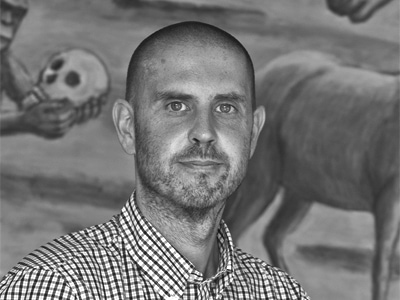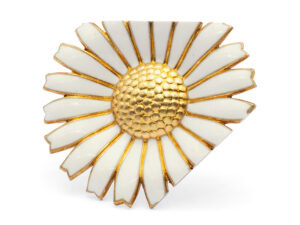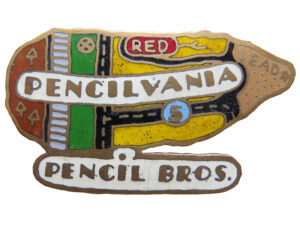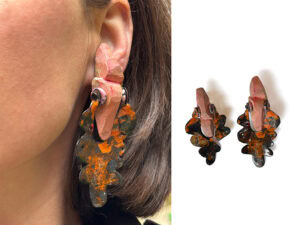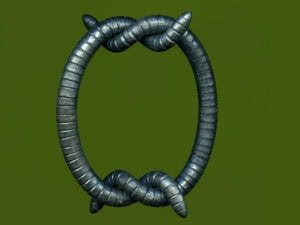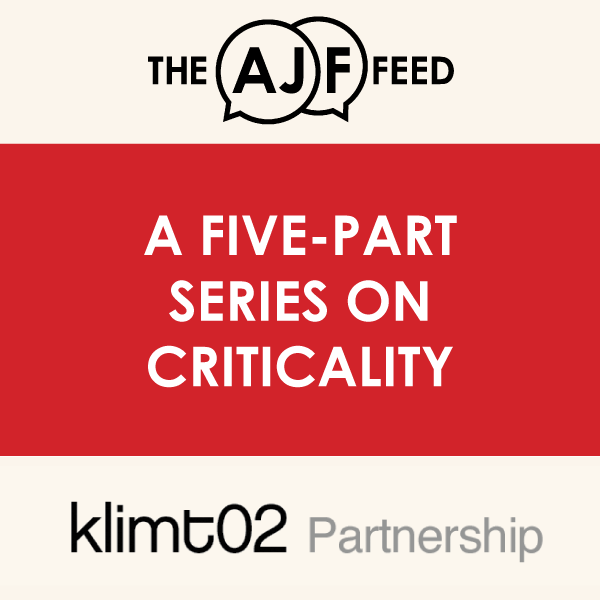
Criticism is a kind of art history done about new or recent objects. It involves judgment, but without the benefit of hindsight. Criticism is different to art history, which isn’t so concerned with judgment. Instead, art history explores the relationship of objects with each other, with history and with various aspects of society. Art history doesn’t have to make the same judgments as criticism – you can do great art history about really terrible objects and never have to say if you think they are good or successful or important.
I don’t necessarily think that the critic should have to state their criteria, but the reasons for their judgments should be made clear in the review. This is so the reader can understand why the critic has come to certain conclusions – and therefore determine whether these judgments and conclusions hold true for them.
Critical discourse is a kind of approach, which can be found in criticism and art history. It is a decision to actively engage with the tools you are using, the discussions you are part of. It is a willingness to ask questions and not assume anything. Discourse is the flow of ideas, conversations, practices and objects that make contemporary jewelry possible.. Critical discourse is an attitude to the different aspects that make up the contemporary jewelry eco-system: making, writing, exhibiting, selling, wearing, and so on.
I think critical discourse is the responsibility of everyone involved with contemporary jewelry. I think we all contribute to it and bring it into being, but it will also look different for each of us. A maker who builds critical discourse into their practice will be doing something different to an art historian who builds it into their practice.
Critical discourse involves an alert and questioning attitude to the terms that you are using, and to the way that you analyze or construct the object of your text. Here’s an example of what I mean. In Patterns of Intention[1] , Michael Baxandall pokes a stick at the lazy way many art historians talk about ‘influence’. As he puts it, using this term generally results in a ‘wrong-headed grammatical prejudice about who is the agent and who the patient: it seems to reverse the active/passive relation which the historical actor experiences and the inferential beholder will wish to take into account.’
When you say French jeweller Rene Lalique influenced American jeweler emiko oye (who translates historical jewelry by Lalique and others into Lego necklaces), you make it seem like Lalique is doing all the work. Instead, it is oye who is the active one, interpreting Lalique’s earlier objects and legacy into something that suits her contemporary needs. As Baxandall concludes, ‘To think in terms of influence blunts thought by impoverishing the means of differentiation.’ The tool (the idea of influence) actually gets in the way of the analysis it is supposed to create.
Here is another example. In the preface to his book Image of the People[2], a study of Gustave Courbet and the 1848 revolution in France, T.J. Clark writes that he doesn’t want to talk about art as a ‘reflection’ of ideology, social relations or history. He doesn’t want to think about history as a ‘background’ to the artwork, mostly unimportant and every now and then brought into view. Nor does he want to assume that the artistic community (the avant-garde) is necessarily the artist’s point of reference. And he refuses intuitive analogies between form and ideological content, as if a lack of firm compositional focus equals egalitarianism, or fragmented composition equals human alienation in industrial society.

Clark wants an art history that keeps looking for active relations between its terms, refusing to allow anything to settle. Objects, whether French paintings or American jewelry, are not expressions of social, political or cultural relations, but instead they actively shape and construct these relations. As anthropologist Nicholas Thomas puts it in Possessions: Indigenous Art/Colonial Culture[3], ‘Art is not an instrument but an arena – one in which art works, critical discourse, institutions and markets are often uncomfortable with each other’s claims.’
What does all this mean for us as a group of writers working on contemporary jewelry? We should be dynamic in how we interrogate contemporary jewelry. We should be sharp and vigilant in the terms that we use and the ways we use them. We should try and achieve an agile and sophisticated network of relations around the objects of contemporary jewelry that are our subject.
How often have we mentioned concepts like ‘the body’ or ‘wearability’ or ‘functionality’, without thinking actively about what they mean, their history and the agendas they serve? How often have we used the term ‘context’, and therefore not thought about anything apart from the obvious, like what the jeweler meant to say, or how this particular object fits in with others in the category of contemporary jewelry? How often have we been slack in our description of the objects we are talking about, and casual in our search for written parallels for their various effects and material qualities? How often have we imported analytical terms or modes from art history without considering their suitability for craft objects like contemporary jewelry?
In the end, while critical discourse has many different forms, I think it shares a sense in which nothing should be taken for granted. Critical discourse knows that while contemporary jewelry is just a game, you should play it as though the outcome really matters.
Lanzando piedras a casas de cristal: Sobre crítica, historia del arte y discurso critico
Critica N°3
Por Damian Skinner
Como parte de una nueva alianza con KLIMT02, este artículo ha sido publicado en su sitio web bajo la etiqueta ‘the AJF feed’. Tres artículos más sobre el tema de la criticidad están siendo publicados este verano bajo este paraguas de colaboraciones (Por favor eche un vistazo a los dos primeros, escritos por Moyra Elliott y Clare Finin).
—Benjamin Lignel
La crítica es una clase de historia del arte realizada sobre objetos nuevos o recientes. Implica juicio, pero sin el beneficio de la retrospección. La crítica es diferente a la historia del arte, que no está tan preocupada por el juicio. La historia del arte, en cambio, explora la relación de los objetos entre sí, con la historia y con diversos aspectos de la sociedad. La historia del arte no tiene que hacer los mismos juicios que la crítica – se puede hacer una gran historia del arte sobre objetos realmente terribles y nunca tener que decir que son buenos, exitosos o importantes.
No necesariamente pienso que el crítico debe tener que exponer sus criterios, pero las razones de sus juicios deben quedar claras en la crítica. Esto es para que el lector pueda entender por qué el crítico ha llegado a ciertas conclusiones y determinar si estos juicios y conclusiones son válidos para ellos.
El discurso crítico es un tipo de enfoque, que puede encontrarse en la crítica y en la historia del arte. Es una decisión de comprometerse activamente con las herramientas que estas empleando y las discusiones de las que eres parte. Es una disposición a hacer preguntas y no asumir nada. El discurso es el flujo de ideas, conversaciones, prácticas y objetos que hacen posible la joyería contemporánea. El discurso crítico es una actitud hacia los diferentes aspectos que conforman el ecosistema contemporáneo de la joyería: hacer, escribir, exhibir, vender, etc.
Creo que el discurso crítico es responsabilidad de todos los involucrados con la joyería contemporánea. Pienso que todos contribuimos con él y lo creamos, pero también es diferente para cada uno de nosotros. Un creador que construye un discurso crítico en su práctica hará algo diferente a un historiador del arte que también trata de hilar un discurso.
El discurso crítico implica una actitud de alerta y de cuestionamiento de los términos que empleas, y de las formas en que se analizas o construyen los objetos en tu texto. Aquí hay un ejemplo de lo que quiero decir. En Patterns of Intention[1], Michael Baxandall hace un llamado de atención a la manera perezosa en que muchos historiadores del arte hablan de la “influencia”. Como él lo expresa, el uso de este término generalmente da como resultado un “prejuicio gramatical erróneo sobre quién es el agente y quién el paciente: parece invertir la relación activo / pasivo entre lo que el actor histórico experimenta y lo que el observador inferencial deseará tomar en cuenta.’
Cuando se dice que el joyero francés René Lalique influenció en la joyería del estadounidense Emiko Oye (que traduce joyas históricas de Lalique y otros en collares de Lego), pareciera que Lalique está haciendo todo el trabajo. En cambio, es Oye quien es el activo, interpretando los objetos y legados anteriores de Lalique en algo que se adapta a sus necesidades contemporáneas. Como concluye Baxandall, “pensar en términos de influencia embota el pensamiento empobreciendo los medios de diferenciación.” La herramienta (la idea de influencia) se interpone realmente en el camino del análisis que se supone crea.
He aquí otro ejemplo. En el prefacio de su libro Image of the People[2], un estudio sobre Gustave Courbet y la revolución de 1848 en Francia, T.J. Clark escribe que no quiere hablar del arte como un “reflejo” de la ideología, las relaciones sociales o la historia. Él no quiere pensar en la historia como un “fondo” para la obra de arte, casi siempre sin importancia y de vez en cuando traída a un primer plano. Tampoco quiere suponer que la comunidad artística (la vanguardia) es necesariamente el punto de referencia del artista. También se niega a las analogías intuitivas entre la forma y el contenido ideológico, como si la falta de un enfoque compositivo firme fuera sinónimo de igualitarismo, o la composición fragmentada es igual a la alienación humana en la sociedad industrial.
¿Qué es lo que quiere el autor? “Quiero descubrir qué transacciones concretas se ocultan detrás de la imagen mecánica de la” reflexión”, saber cómo” fondo “se convierte en” primer plano “; en lugar de la analogía entre forma y contenido, descubrir la red de relaciones reales y complejas entre ambas. Estas mediaciones están históricamente formadas e históricamente alteradas; en el caso de cada artista, cada obra de arte, es históricamente específica”.
Clark quiere una historia del arte que siga buscando relaciones activas entre sus términos, negándose a permitir que se tome algo por sentado. Los objetos, ya sean pinturas francesas o joyas americanas, no son expresiones de relaciones sociales, políticas o culturales, sino que activamente forman y construyen estas relaciones. Como el antropólogo Nicholas Thomas lo dice en Possessions: Indigenous Art/Colonial Culture[3], “El arte no es un instrumento, sino el campo de batalla en la que la obra de arte, el discurso crítico, las instituciones y los mercados a menudo se sienten incómodas con las proclamas de las otras”.
¿Qué significa todo esto para nosotros como un grupo de escritores que trabajan sobre joyería contemporánea? Debemos ser dinámicos en cómo interrogamos la joyería contemporánea. Debemos ser agudos y vigilantes en los términos que usamos y las formas en que los empleamos. Debemos tratar de lograr una ágil y sofisticada red de relaciones alrededor de los objetos de joyería contemporánea que son nuestro tema.
¿Con qué frecuencia hemos mencionado conceptos como ‘el cuerpo’ o ‘usabilidad’ o ‘funcionalidad’, sin pensar activamente en lo que significan, su historia y las agendas que sirven? ¿Con qué frecuencia hemos utilizado el término contexto y, por lo tanto, no pensamos en nada aparte de lo obvio, como lo que el joyero quería decir, o cómo este objeto particular encaja con otros en la categoría de joyas contemporáneas? ¿Cuántas veces hemos sido perezosos en nuestra descripción de los objetos de los que estamos hablando y casuales en nuestra búsqueda de discursos similares para sus diversos efectos y cualidades materiales? ¿Con qué frecuencia hemos importado términos o modos analíticos de la historia del arte sin considerar su idoneidad para objetos artesanales como las joyas contemporáneas?
Al final, si bien el discurso crítico tiene muchas formas diferentes, creo que comparte un sentido en el que nada debe darse por sentado. El discurso crítico sabe que mientras que la joyería contemporánea es apenas un juego, éste debe ser jugado como si el resultado realmente importara.
[1] Michael Baxandall, Patterns of Intention (New Haven, CT: Yale University Press, 1987).
[2] T.J. Clark, Image of the People (1973; repr. London: Thames & Hudson, 1982).
[3] Nicholas Thomas, Possessions: Indigenous Art/Colonial Culture (London: Thames & Hudson, 1999).
Damian Skinner es un historiador de arte de Aotearoa, Nueva Zelanda, y curador de Arte Aplicado y Diseño en el Museo de Auckland.
Translated from English by Andreína Rodriquez, with support from Barbara Magaña and Marina Acosta.
[1] Michael Baxandall, Patterns of Intention (New Haven, CT: Yale University Press, 1987).
[2] T.J. Clark, Image of the People (1973; repr. London: Thames & Hudson, 1982).
[3] Nicholas Thomas, Possessions: Indigenous Art/Colonial Culture (London: Thames & Hudson, 1999).
